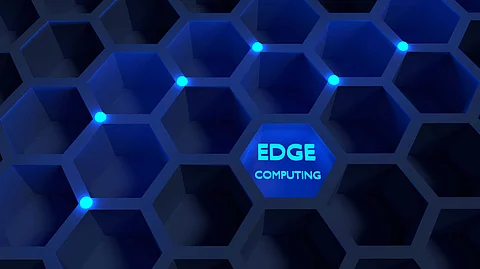

As edge computing has emerged out as a new approach to network architecture that eliminates the drawbacks of traditional cloud computing, certain reports have predicted its evident growth in the coming years. According to a report, the total edge computing market size is expected to grow from US$ 2.8 billion in 2019 to US$ 9.0 billion by 2024, at a CAGR of 26.5 percent during the forecast period.
As for its short term commitments, edge computing will see a steady rise in its growing importance and maturity across the industry by 2020. Around 57 percent of mobility decision-makers surveyed in the Forrester Analytics Global Business Technographics Mobility Survey, 2019, affirmed that they have edge computing on their roadmap for the next 12 months.
Moreover, here are some significant predictions for 2020 by Forrester in edge computing space.
In 2020, fit, form and function will drive the development of custom form factors. Edge computing is characterized by the variety in applicable use cases in multiple industries. Unique demands of compute, storage, and networking for each use case will drive the development of custom form factors, right from the processor level. One example that we see already is HPE leading a Series C investment of up to US$145 million with former Cisco CEO John Chambers' startup Pensando Systems, which is bringing to market a custom programmable processor optimized for edge computing.
The edge cloud service market will grow by at least 50%. Public megacloud providers, telecommunication companies, platform software providers, content delivery networks, and data center colocation providers are innovating to provide basic infrastructure-as-a-service (IaaS) and advanced cloud-native programming services on distributed edge computing infrastructure. The goal of these vendors is to offer IaaS and platform-as-a-service (PaaS) services that run independently of or with only intermittent connectivity to public cloud and data center assets. In 2020, this nascent market will begin to see explosive growth.
Companies will choose multi-vendor packaged solutions over single vendors. Due to ubiquitous bandwidth and connectivity limitations, maintaining edge computing platforms will drive organizations to work with integrators to support their edge computing solutions instead of building and deploying their own. This is applicable across industries including retail, manufacturing, and transportation and logistics.
According to the survey conducted by Forrester, the biggest benefits organizations seek from edge computing include flexibility to handle present and future artificial intelligence demands and the fact that computing at the edge avoids network latency and allows faster responses.
Besides, as noted by TechCrunch, Microsoft CEO Satya Nadella recently said that the future of computing could actually be at the edge, where computing is done locally before data is then transferred to the cloud for AI and machine learning purposes. What goes around, comes around.
In order to understand the impact that edge is going to have on computing, one has to look at the research, which predicts there will be 50 billion connected devices in the world by 2030, a number even he finds astonishing, suggested Nadella. He further added that "I mean this is pretty stunning. We think about a billion Windows machines or a couple of billion smartphones. This is 50 billion [devices], and that's the scope."
Join our WhatsApp Channel to get the latest news, exclusives and videos on WhatsApp
_____________
Disclaimer: Analytics Insight does not provide financial advice or guidance. Also note that the cryptocurrencies mentioned/listed on the website could potentially be scams, i.e. designed to induce you to invest financial resources that may be lost forever and not be recoverable once investments are made. You are responsible for conducting your own research (DYOR) before making any investments. Read more here.
